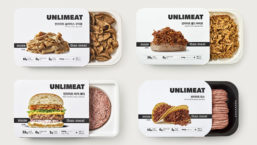Home » Keywords: » meat substitutes
Items Tagged with 'meat substitutes'
ARTICLES
Plant-Based Products Impact Menus
Foodservice operator strategies and product solutions aim to be on target
January 13, 2020
Givaudan: Protein Challenge
Givaudan publishes insights from Givaudan’s Chef’s Council 2019 and announces new breakthrough fat encapsulation technology for plant protein
November 14, 2019
Meat Substitutes Recorded $19.5 Billion Sales Globally in 2018
The US, Russia and the UK show the highest increases in the share of consumers worrying about climate change
May 20, 2019
On Food Flavor Creation
Vegetarian meat flavors can be produced by the Maillard reaction, the interaction of the amino acid components of protein with reducing sugar molecules when exposed to heat
February 12, 2016
Dr. Praeger’s Super Greens Veggie Burger
New veggie burger contains collard greens, turnip greens and mustard greens, as well as Swiss chard and kale
February 19, 2015
Flavorful Fake-outs
Although most animal protein analogs are still made from soy, ingredients such as mushrooms, nuts, grains and even eggplant are providing new alternatives for meat.
April 11, 2013
Meatless Grows, No Bull
Texturized soy protein has reached an acme of popularity, elevated to a trendy, sought-after ingredient by those same Baby Boomers who once shunned soy burgers.
April 11, 2013






